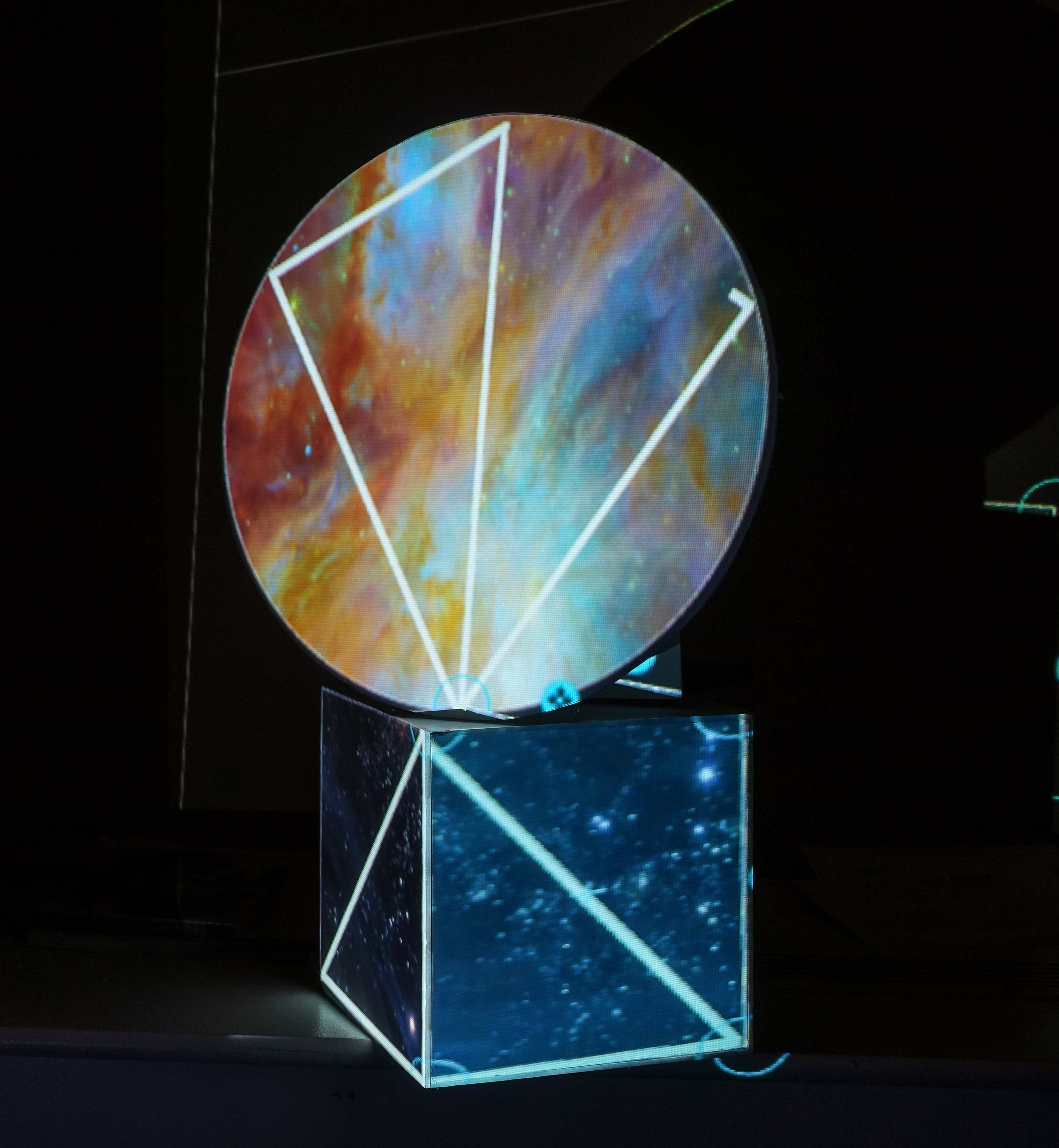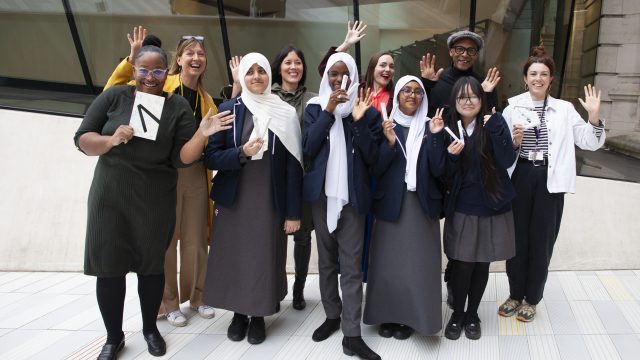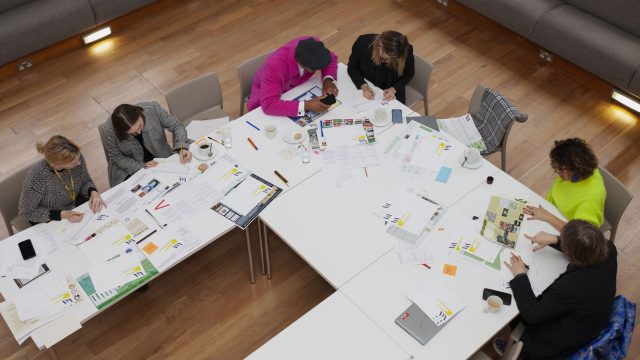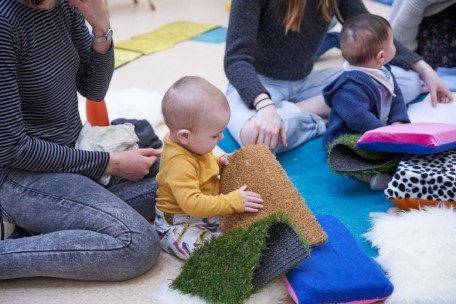
Our Samsung Digital Artist in Residence, Yiyun Kang, has just finished the end of her residency with us after transforming the Cast Courts with her new work, “Casting“. As a parting gift, Yiyun led a session for our Samsung Digital Classroom for 16 – 19 year olds, exploring projection mapping. We’d like to share a few tips from the session for you so that with minimal kit and fuss, you can try it at home, college or school.
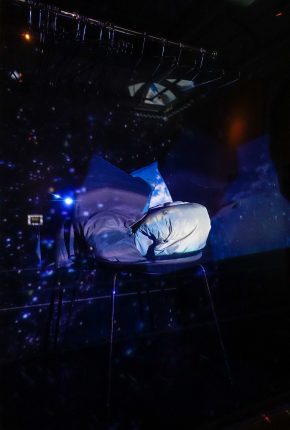
In simple terms, projection mapping is the act of using a 3D form as a screen. Projection usually happens onto a 2D surface, such as a flat wall but by projecting onto something like a cube or the corner of a wall you can bring in depth as well. It has been around for a while, being used with analogue film from the late sixties, but the advent of digital projection has allowed artists and designers to create increasingly complex uses.
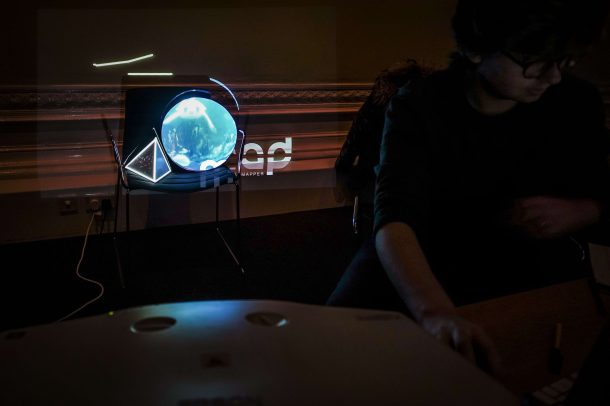
First off, you are going to need to lay your hands on a few pieces of equipment:
- A PC or Mac with a video output
- A projector
- Video Cables (e.g. HDMI, DVI, VGA) to connect the computer and projector
- A projector stand
- Projection mapping software
There are a lot of options when it comes to choosing a piece of software to use. Projectionmapping.org has a full list of software that you can try, some of which is free and others paid for. Many of the paid options will have free trials available although they may come with limitations such as not being able to save, one month of use or watermarks.
In the workshop we used MadMapper as it is pretty accessible. If you are looking for a Windows alternative then try Painting With Light or VPT7, both of which are free to use and simple to pick up. Take a look at these video tutorials for VPT7 which should give you a head start when using the interface and creating meshes for your projections.
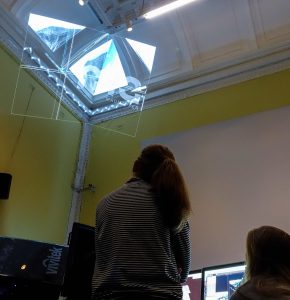
Alongside your choice of software you can combine other programs that allow you to control your projections for performances, create animations and add in special effects. You may, for example, create a video which is then edited in After Effects, or create geometric animations in Maya and then create transitions and fades using VDMX. To get the basics down, try using any stock video you have to hand and get used to mapping it accurately on to 3D forms. From there your imagination is the limit and you can begin to create custom projections and animations to bring spaces to life.

It was great to have Yiyun lead the workshop and talk with those who came along about her work and practice. Rather than focusing on the making of objects, Kang’s work explores the cultivation of environments through spatial projection mapping installations. “Casting” played with the viewer’s impressions of time, space and physicality while also reflecting on the copied nature of the plaster casts which were the work’s body.
The Samsung Digital Classroom is a new programme for 16 – 19 year olds which offers hands on, practical workshops exploring the latest in digital art and design. You can find more of our Samsung Digital Classroom Sessions online here and follow blogs about the sessions through News from the Learning Department.
